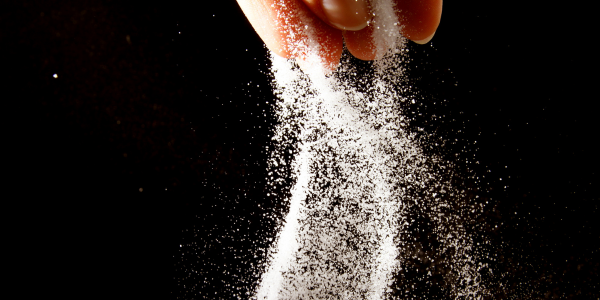- We're Hiring! View Opportunities
- 512-250-5055
3 Ways to Boost Your Heart Health

Wellness Wednesday: How to Make—and Keep—Your New Year’s Resolution
January 3, 2024
Understanding Your Kidney Health
March 6, 2024Heart disease continues to be the leading cause of death for both men and women in the United States. In fact, the Centers for Disease Control and Prevention (CDC) reports that heart disease causes 1 in every 5 deaths. Heart disease refers to several different types of heart conditions. Coronary artery disease—caused by plaque buildup in the walls of the heart’s arteries—is the most common. Other forms of heart disease include heart attack, heart failure, arrhythmia, and congenital heart defects.
One American dies every 33 seconds from heart disease, according to the CDC.
The symptoms of heart disease can vary, and some people may not even know they have a heart condition until they have a heart attack. Red flags include shortness of breath, chest discomfort, difficulty with speech, heart palpitations, and sudden loss of responsiveness.
Exercise Your Way to a Healthier Heart
Certain uncontrollable factors increase your risk of heart disease, including age, sex, and family history. However, other factors that increase your risk for heart disease—such as stress, inactivity, obesity, diabetes, smoking, and a poor diet—are controllable.
A healthy diet and lifestyle are the best ways to fight heart disease, so consider incorporating these three types of exercise into your routine to improve your heart health:
- Aerobic exercise improves circulation and can help your cardiac output. Get at least 30 minutes a day of heart-pumping moderate activity—like brisk walking, dancing, or cycling—at least five days a week.
- Resistance training with weights, bands, or body weight at least two nonconsecutive days per week can help create leaner muscle mass. When paired with aerobic activity, you can raise your good cholesterol levels and lower bad cholesterol levels.
- Flexibility workouts (e.g., stretching and balance) are critical for musculoskeletal health. It’s important to stay flexible and free from joint pain so you can maintain your regular aerobic and resistance workouts.
Keep in mind that the overall pattern of your life choices can determine your heart health. Contact a healthcare professional to find out your risk for heart disease or for more information.
Cutting Back on Salt
Monitoring your daily sodium intake can have major health benefits—including reducing your risk of a heart attack and lowering your blood pressure. Sodium is hiding in many foods, so step one is to avoid adding salt while cooking. However, more than 70% of the sodium we eat comes from packaged and restaurant foods. Consider these ways to decrease your salt intake:
- Limit meals out or order low-sodium food options that are steamed, baked, grilled, poached or roasted.
- Choose low-sodium or “no salt added” varieties of deli meats, canned soups, pasta sauce, beans and vegetables.
- Go easy on the condiments, or select a reduced sodium version. Ketchup, barbecue sauce, mustard, hot sauce, soy sauce, and salad dressing are generally loaded with sodium.
If you have any questions about your diet, talk to your doctor.

Sodium Guidelines
The Dietary Guidelines for Americans recommends adults limit their sodium intake to
less than 2,300 milligrams per day—that's about 1 teaspoon of table salt.
When Was the Last Time You Cleaned Your Water Bottle?
Your reusable water bottle may carry some dirty secrets: bacteria, buildup, and mold. If you don’t properly clean your reusable water bottle—and its cap, straw or other parts—at the end of each day, you’re putting yourself at risk of getting sick. Ideally, if you use your water bottle regularly, you should wash it daily and give it a deep cleaning once a week. Try these cleaning tips:
- Put it in the dishwasher. If your reusable bottle is dishwasher-safe, disassemble it and run the dishwasher at its hottest wash and dry setting to kill any bacteria.
- Wash with soap and water. You can effectively wash your bottle by hand with hot water and liquid dish soap.
- Use vinegar. This is a good option if you haven’t washed your bottle in a while and there’s a slimy film or odor in your bottle. Fill the bottle halfway with equal parts distilled white vinegar and water. With the cap on, shake it quickly and let it sit overnight. The next day, rinse the bottle and let it dry.

Baked Parmesan Fish
- ⅓ cup nonfat parmesan cheese (grated)
- 1 tsp. all-purpose flour
- 1 tsp. thyme sprigs (leaves removed and crushed)
- 4, 4-6 oz. white fish fillets
- 1 medium onion (chopped)
- 1 cup halved mushroom caps
- ½ cup green onions (finely sliced)
- 1 clove garlic (crushed)
Preparations
- Preheat the oven to 350 F. Place the cheese, flour, and thyme in a paper bag.
- Individually coat the fish by gently shaking it in a bag. Discard the coating ingredients.
- Place the fillets in a baking pan on a rack. Bake for 20 minutes or until the fish flakes easily when tested with a fork.
- Heat a skillet over medium-high heat. Add the onion, mushrooms, green onions, and garlic. Cook, stirring frequently, until the onions are tender. Season with ground black pepper.
- Serve the baked fish topped with mushroom mixture.
Total calories: 204
Total fat: 4 g
Protein: 36 g
Sodium: 149 mg
Carbohydrate: 7 g
Total sugars: 2 g
Source: MyPlate



